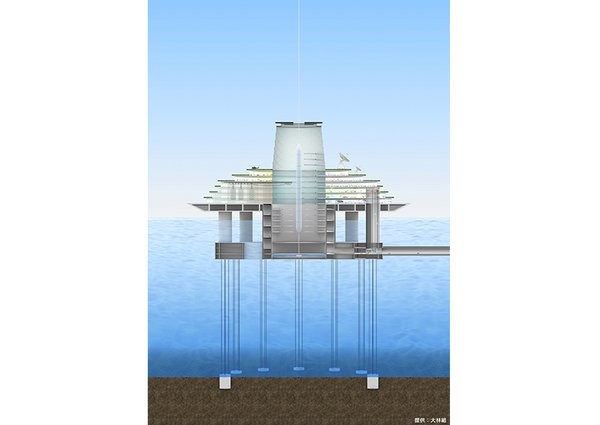Space elevator: modern ideas and the state of their development

Although the construction of a space elevator is already within our engineering capabilities, the passions surrounding this structure have recently unfortunately subsided. The reason is that scientists still can not get the technology for the production of carbon nanotubes of the required strength on an industrial scale.
The idea of launching cargo into orbit was proposed by the same person who founded the theoretical cosmonautics - Konstantin Eduardovich Tsiolkovsky. Inspired by the Eiffel Tower seen in Paris, he described his vision of a space elevator in the form of a tower of enormous height. Its top would just be in a geocentric orbit.
The elevator tower is based on durable materials that prevent compression - but modern space elevator ideas still consider a version with cables that need to be tensile. This idea was first proposed in 1959 by another Russian scientist, Yuri Nikolayevich Artsutanov . For the first time, a scientific work with detailed calculations of a space elevator in the form of a cable was published in 1975, and in 1979 Arthur Clark popularized it in his work “Fountains of Paradise”.
Although nanotubes are currently recognized as the most durable material, and the only one suitable for building an elevator in the form of a cable stretching from a geostationary satellite, the strength of nanotubes obtained in the laboratory is still not enough to be calculated.
Theoretically, the strength of nanotubes should be more than 120 GPa, but in practice, the highest extensibility of a single-walled nanotube was 52 GPa, and on average they broke in the range of 30-50 GPa. For a space elevator, materials with a strength of 65-120 GPa are needed.
Late last year, the Sky Line movie was screened at DocNYC, the largest American documentary film festival , which describes attempts by U.S. engineers to build a space elevator - including those from NASA's X-Prize contest.
The main characters of the film are Bradley Edwards [Bradley Edwards] and Michael Lain [Michael Laine]. Edwards is an astrophysicist who has been working on the idea of a space elevator since 1998. Lane is an entrepreneur and founder of LiftPort, a company promoting the commercial use of carbon nanotubes.
In the late 90s and early 2000s, Edwards, receiving grants from NASA, worked closely on the idea of a space elevator, calculating and evaluating all aspects of the project. All his calculations show that this idea is feasible - if only a fiber strong enough for a cable appears.
Edwards for some time entered into a partnership agreement with LiftPort to seek financing for the elevator project, but due to internal disagreements, the project never took place. LiftPort closed in 2007 - although a year earlier, as part of proving the operability of some of its technologies, it successfully demonstrated a robot climbing a vertical mile-long cable suspended in balloons.
Now lane countsthat private space, concentrating on reusable rockets, could completely displace the development of a space elevator in the foreseeable future. According to him, the space elevator is attractive only because it offers cheaper methods of delivering goods into orbit, and reusable rockets are designed specifically to reduce the cost of this delivery.
Edwards blames the lack of real support for the project in stagnating the idea. “This is exactly what projects look like, which hundreds of people scattered around the world are developing as a hobby. No serious progress will be made until real support and centralized management are available. ”

The situation with the development of the idea of a space elevator in Japan is different. The country is famous for its achievements in the field of robotics, and the Japanese physicist Sumio Iijimaconsidered a pioneer in the field of nanotubes. The idea of a space elevator here is almost a national one.

Japanese company Obayashi [Obayashi Company] vows to introduce a working space elevator by 2050 . Company manager Yoji Ishikawa says they work with private contractors and local universities to improve existing nanotube technology.

Ishikawa says that although the company understands the complexity of the project, they see no fundamental obstacles to its implementation. He also believes that the popularity of the idea of a space elevator in Japan is caused by the need to have some kind of national idea, uniting people against the background of the difficult economic situation of the last couple of decades.
Ishikawa is sure that although an idea of such a scale can most likely be realized only through international cooperation, Japan could very well become its locomotive due to the great popularity of the space elevator in the country.

Meanwhile, the Canadian space and defense company Thoth Technology received last summer US patent No. 9085897 for their version of the space elevator. More precisely, the concept provides for the construction of a tower that maintains rigidity thanks to compressed gas.
The tower should deliver cargoes to a height of 20 km, from where they will be put into orbit using conventional rockets. Such an intermediate option, according to company estimates, will save up to 30% of fuel compared to a rocket.
